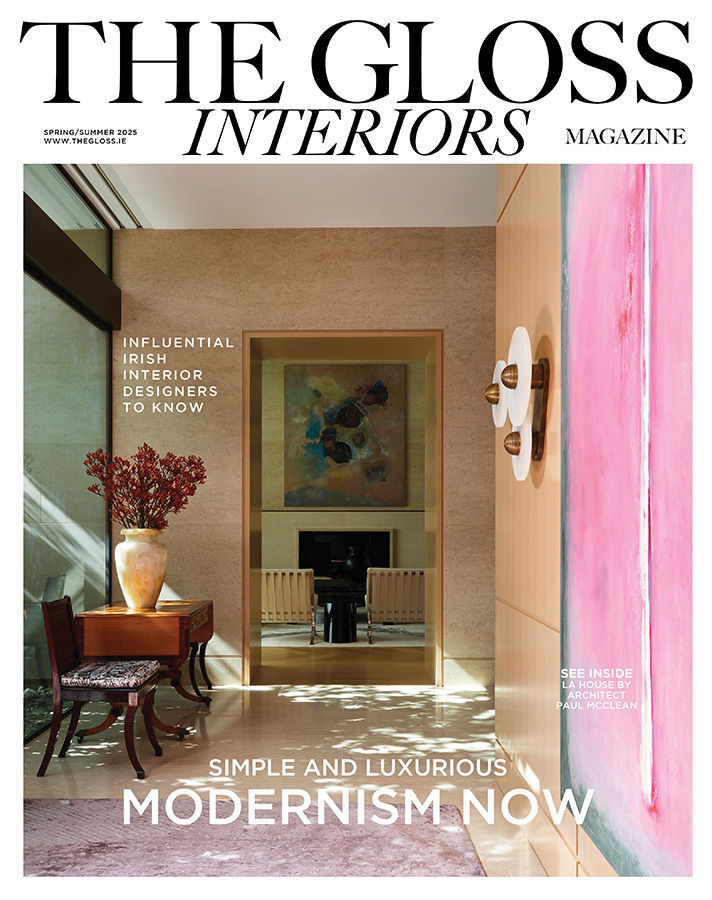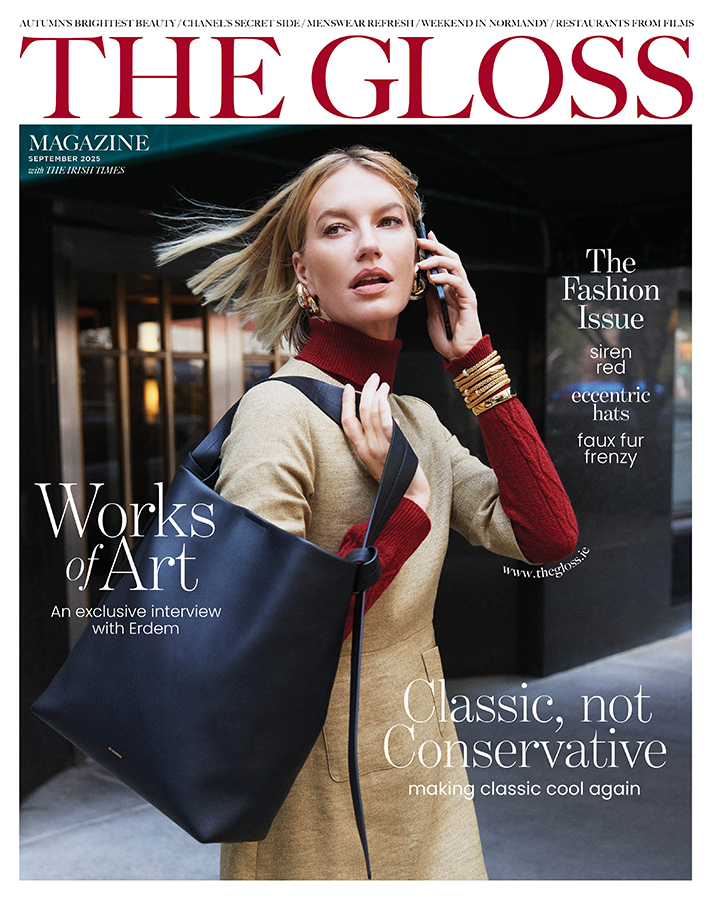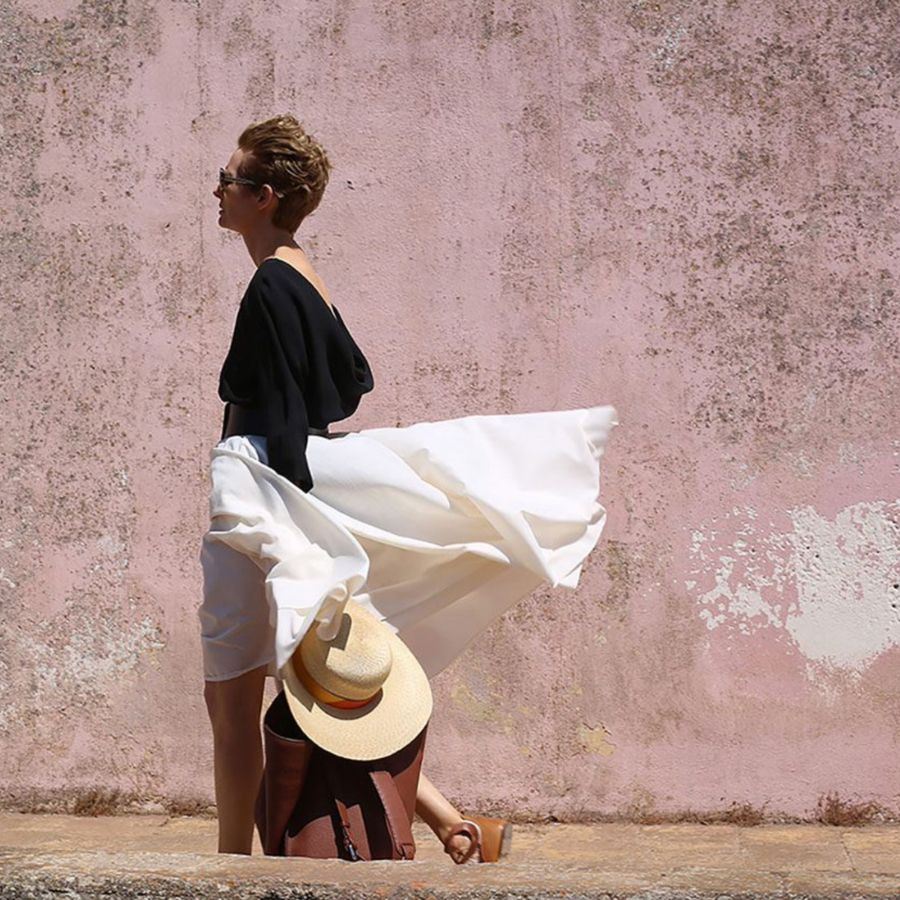Ruby Eastwood surrenders to slowness as summer approaches, and finds this season’s fashion follows suit …
The shift from spring to summer is more than a change in weather; it is a shift in rhythm, a recalibration of the senses. Light intensifies, and time itself seems to slip its structure. While spring is filled with anticipation, summer is about presence. The air hums with heat. Fruit swells and softens. The mind drifts. Urgency fades, and in its place, a slower way of moving emerges.
In a culture addicted to momentum, stillness can feel almost transgressive. Laziness is a word weighted with judgment, but languor suggests something richer: a deliberate surrender to slowness, a moment of fullness rather than emptiness. To exist without striving may seem at odds with the pace of modern life, but perhaps that is what makes it feel so luxurious. The beauty of summer does not demand effort. It simply unfolds.
The first citation of “languor” in the Cambridge Dictionary is steeped in its essence: “She missed Spain and the languor of a siesta on a hot summer afternoon.” It evokes an entire mood: heat-drugged stillness, the weight of sunlight, the way time dissolves in the thick of the afternoon. The Romantics took the word further, associating it with the exhaustion that follows too much beauty. Fragonard’s women lie boneless in their silk dresses, draped in dappled light. Goethe’s lovers are lost in the golden hour glow. Marie Antoinette’s Petit Trianon blurs indulgence into dream.
“There is an instinct to bring life outside, to feel bare feet on the warm stone, to watch candlelight flicker on terraces … even time itself loosens, expanding in the heat.”
Languor lingers wherever summer settles. It appears in the honeyed glow of Call Me by Your Name, where time bends around afternoons spent by the river. It lingers in the hazy, slowmotion stillness of La Piscine, where the weight of the heat is almost tangible. It filters through white curtains in Sofia Coppola’s The Virgin Suicides, capturing something just beyond reach. It’s present in Tilda Swinton’s breezy Dior-designed costumes in A Bigger Splash (above). It can be found in Slim Aarons’ photographs of poolside leisure, in Monet’s dappled picnics, in the way a linen dress clings to the body before catching the breeze. No matter the century, the essence of summer remains the same: heat, slowness, and the dreamlike quality of days that refuse to be rushed.
Summer alters not only the body but also the world around it. Food ripens on the vine, with tomatoes splitting with sweetness and berries deepening in color. Herbs bloom untended. Meals become effortless, dictated by what is freshest rather than what requires the most labour. Indoors, the season rearranges the light. Sheer curtains catch the breeze. Doors stand open to the night air. There is an instinct to bring life outside, to feel bare feet on warm stone, to watch candlelight flicker on terraces, to slip into cool linen sheets at midday. Even time itself loosens, expanding in the heat.
Fashion follows suit. The SS25 collections embraced this mood of weightless ease, offering clothes that drift and breathe rather than structure and contain. With the resurgence of slip dresses, washed-out florals, gauzy cottons, and barely-there silks, this season’s aesthetic suggests the desire to step outside of time and inhabit a space where days unfurl without direction. These are clothes for endless afternoons, for dusk settling over a quiet terrace, for sunwarmed skin and salt-stiff hair. Even the return of ballet flats and sandals suggests a shift toward effortlessness. Hair is looser, skin is dewier, and make-up is minimal, as though barely touched. The whole effect is one of movement and light, silhouettes that skim the body rather than reshape it.
There is something distinctly sensual about typical summer fashion, not in a forced or overt way but in its intimacy with the body. A silk camisole clings to sun-warmed skin before catching the wind. A linen skirt moves with the legs rather than against them. Gold jewellery glows against tanned shoulders. The appeal is not in precision but in ease. True summer dressing is about adaptation rather than artifice. It responds to the elements, adjusting to the heat, the movement of air, the way fabrics soften under the sun. The best looks of the season understand this instinctively. They do not try too hard. They embrace lightness, softness, and movement.
There is no need to overstate it. Summer will always demand ease, and fashion will always follow. The best of this season’s collections do not seek to reinvent. They lean into what has always been true. The clothes of summer, like the season itself, are best when they ask nothing of us at all.
SEE MORE: Moodboard – This Month The Mood Is Fly






